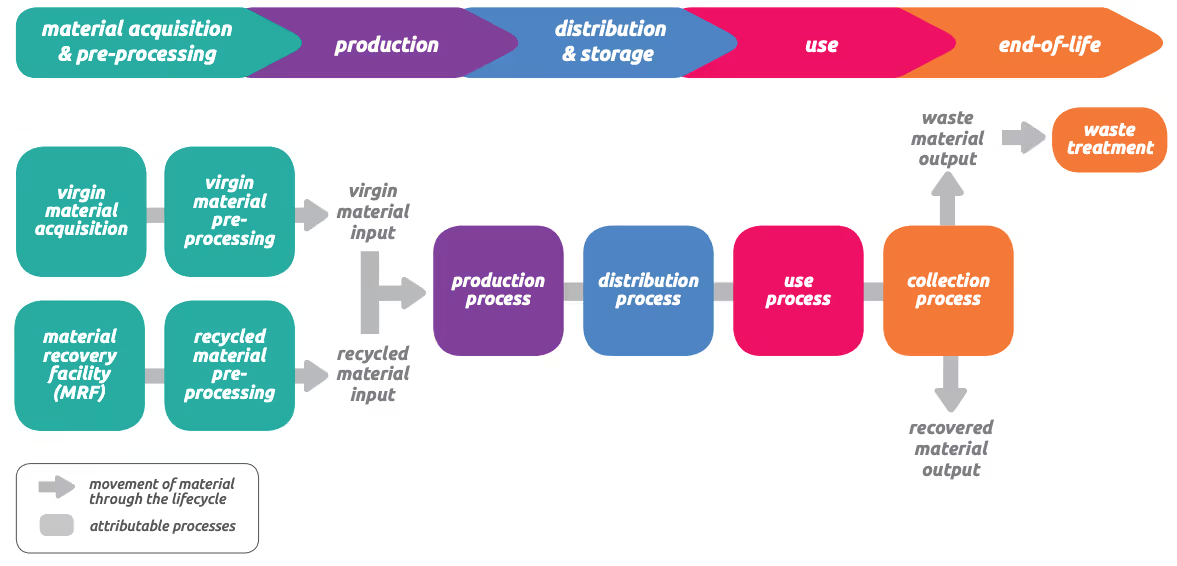End-of-life treatment of sold products emissions, defined as Scope 3 Category 12 in the GHG Protocol, encompass the greenhouse gas (GHG) emissions associated with the disposal and recycling of a company's sold products once they have reached the end of their useful life.
This category addresses emissions from activities such as waste processing, landfill operations, incineration, and the recycling process itself. It is particularly relevant for products that generate significant waste, such as electronics, plastics, and vehicles, where disposal processes can lead to substantial GHG emissions.
Key elements of this category include:
- Waste disposal methods: Different disposal methods emit varying amounts of GHGs. For example, landfilling might generate methane, a potent GHG. In contrast, incineration might emit carbon dioxide and offer energy recovery opportunities that could displace fossil fuel consumption.
- Recycling processes: Emissions from the energy used in recycling processes or emissions are avoided by recycling materials that replace virgin materials. For instance, recycling aluminium saves approximately 95% of the energy required to make the same amount from raw materials, significantly reducing GHG emissions.
- Geographical variations: Emissions factors can vary by region depending on the prevalent waste management practices, regulatory frameworks, and technology used in waste processing facilities.
- Product lifespan and composition: The materials making up a product and the complexity of disassembling and processing these materials at the end of the product's life affect the total emissions calculated.
This category does not include emissions from the manufacturing or use phases of the product lifecycle, focusing solely on the disposal, treatment, and recycling stages.
For what companies is scope 3 category 12 a hotspot?
Scope 3 category 12 End-of-life treatment of sold products emissions is particularly relevant for:
- Companies selling physical products:
- Companies that produce goods requiring disposal or treatment at end-of-life
- Both manufacturers of final products and intermediate products
- Manufacturing companies:
- Particularly those producing durable goods with significant end-of-life impacts
- For example, automakers whose products have defined lifetimes and require specific disposal treatments
- Companies producing goods with packaging:
- Organisations need to account for the total mass of both sold products and their associated packaging through end-of-life after consumer use
- Companies selling intermediate products:
- These companies must specifically account for emissions from disposing of their intermediate products at the end of their life
- This applies even if their products are later incorporated into other products
The relevance is particularly high for companies whose products:
- Require specific waste disposal methods
- Generate significant waste at end-of-life
- Have packaging that requires disposal or treatment
- Have clear end-of-life treatment paths that can be tracked and measured
How to calculate end-of-life treatment of sold products emissions?
The formula to calculate these emissions is:
CO2e emissions = ∑ (total mass of sold products and packaging × % of waste treatment method × emission factor)
Where:
- Total mass includes products and packaging from point of sale to end of life after consumer use
- Percentage of waste treatment method represents the proportion treated by different methods (landfill, incineration, recycling)
- Emission factor is specific to each waste treatment method - use a carbon accounting software like Plan A to automate these calculations
More information can be found in the GHG protocol.
Key considerations: Products necessitating special waste disposal, generating significant end-of-life waste, having packaging requiring treatment, or with traceable end-of-life pathways are particularly relevant.
How can companies reduce emissions related to end-of-life treatment of sold products?
Here are the 3 key ways companies can reduce end-of-life treatment of sold products emissions:
- Waste treatment optimisation: Implement lower-emitting waste treatment methods.
- Recycling implementation: Establish recycling measures that lead to net GHG reductions. Reducing waste entering treatment through recycling reduces GHG emissions from waste treatment in the end-of-life stage.
- Material selection and design: Use recycled content in products to reduce upstream virgin material acquisition, provided that recycling processes are less GHG intensive than virgin extraction.

Source: GHG Protocol
Important to consider: Companies should note that focusing solely on GHG emissions reduction might lead to unfavourable impacts in other environmental areas. It's recommended to consider multiple environmental metrics before making reduction decisions (learn more).
Get started with carbon accounting with Plan A, schedule a call with our team.



